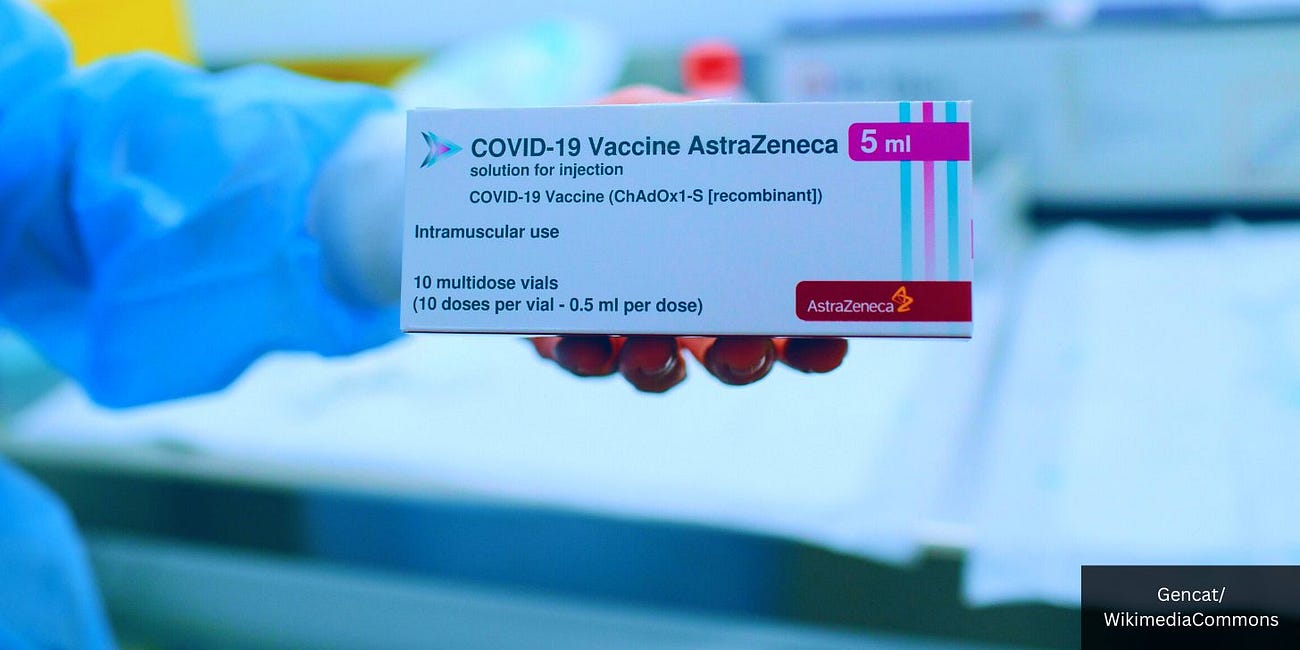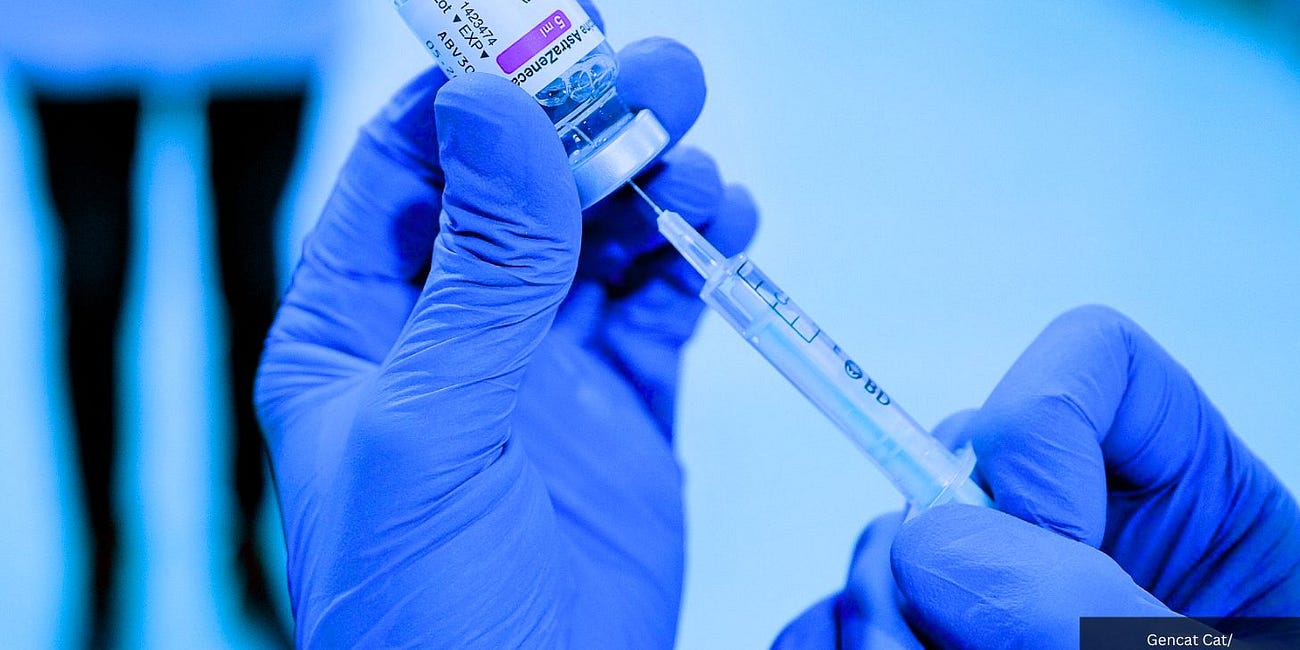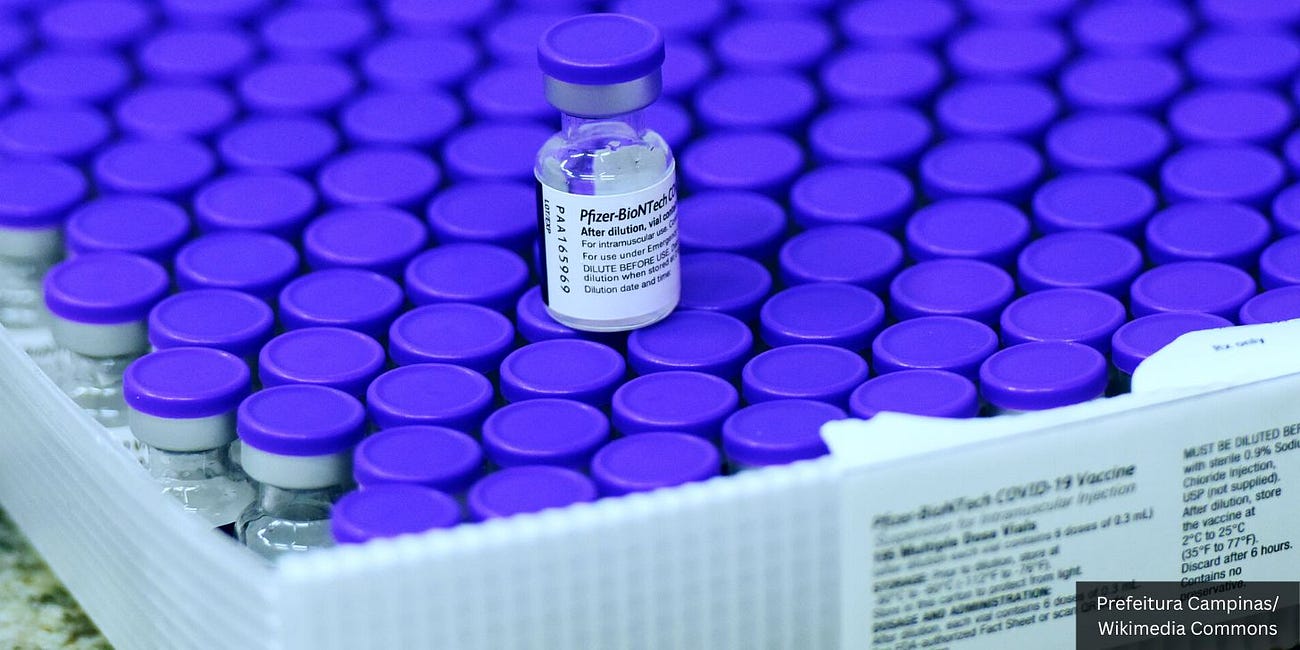Country Underreports COVID-19 Jab Injuries by 99%: 'European Journal of Clinical Investigation'
"[L]ess than 1% of AEs were reported in the Czech Republic," study argues.
A study published Thursday in the European Journal of Clinical Investigation has uncovered troubling discrepancies in the safety of different batches of COVID-19 vaccines used in the Czech Republic.
The research, conducted by Dr. Tomáš Fürst and his team, highlights significant variability in adverse event (AE) reports, revealing that some batches cause far more injuries than others.
Compounding this concern is the finding that countries, including the Czech Republic, may be underreporting COVID vaccine injuries by as much as 99%, raising critical questions about the safety and consistency of vaccine manufacturing.
That figure corroborates a 2010 analysis submitted by Harvard doctors to the U.S. Department of Health and Human Services (HHS) Agency for Healthcare Research and Quality that confirmed fewer than 1% of vaccine adverse events that do occur are ever reported to the Centers for Disease Control and Prevention (CDC).
Current CDC data show there have been 1,640,416 reported injuries linked to the COVID jab, meaning the true number could be closer to 164,041,600.
Follow Jon Fleetwood: Instagram @realjonfleetwood / Twitter @JonMFleetwood / Facebook @realjonfleetwood
High Variability in Adverse Event Reports
The new study reveals that some batches of Pfizer’s COMIRNATY mRNA COVID shot had up to 5.54 AE reports per 1,000 doses, while others had almost no adverse reports at all.
Notably, the early batches, which were released at the beginning of the vaccination campaign, were associated with a significantly higher number of adverse events.
The AstraZeneca batch ABV2856, containing only 19,200 doses, was linked to 203 adverse reports, translating to 10.57 AE words per 1,000 doses.
“The early batches exhibit a large number of AE reports,” the study notes.
“For example, batch EJ6796 contained only 9750 doses, yet 54 AE reports were associated with it (5.54 AE reports per 1000 doses). On the other hand, almost no AEs were associated with COMIRNATY Omicron BA 4–5 batches.”
Underreporting in the Czech Republic
A comparison with data from Denmark exposed a stark contrast in the reporting of adverse events.
Danish pharmacovigilance systems reported adverse events at a rate ten times higher than their Czech counterparts.
This discrepancy suggests a substantial underreporting of adverse events in the Czech Republic, estimated to be at least 82%.
The study implies that if the Danish underreporting rate is around 95%, the actual reporting rate in the Czech Republic could be less than 1%.
“[T]he number of AE reports filed in Denmark was, on average, about 10 times higher than in the Czech Republic,” the authors write.
“This implies that even if all AEs were reported in Denmark (which is highly unlikely), the Czech underreporting rate must be at least 82%. Should the underreporting rate in Denmark be in line with the pre-pandemic expectations, that is, somewhere in the region of 95%, this would indicate that less than 1% of AEs were reported in the Czech Republic.”
Follow Jon Fleetwood: Instagram @realjonfleetwood / Twitter @JonMFleetwood / Facebook @realjonfleetwood
Discrepancies in Pharmacovigilance Systems
The study highlights a concerning gap in the effectiveness of the Czech pharmacovigilance system, raising questions about the accuracy of vaccine injury monitoring systems in other countries.
In the Czech data, only 54% of AE reports could be matched to specific batches, compared to 93% in the Danish data.
“[T]he comparison of Czech and Danish pharmacovigilance data on identical vaccine batches has revealed a superior functioning of the AE reporting system in Denmark compared to the Czech Republic, not only from the perspective of pairing the reported AEs with respective batches but also from the perspective of the underreporting rate,” the study reads.
This inability to pair a significant portion of reports with their respective batches undermines the accuracy of safety assessments and poses a serious challenge for public health monitoring.
Potential Manufacturing Issues
One of the most alarming findings is the suggestion that suboptimal manufacturing processes might have been responsible for the higher number of adverse events in the early batches of vaccines.
The data apparently indicate these issues improved over time, but the initial variability in safety raises concerns about the quality control measures in place during the early stages of jab production.
“The observed pattern might lie in the suboptimal vaccine manufacturing process at the beginning of the vaccination campaign, which gradually improved over the course of 2021,” the study authors write.
Implications for Vaccine Safety
These findings underscore the urgent need for enhanced transparency and robustness in pharmacovigilance systems worldwide.
The study authors call for further investigation into the batch-dependent safety signals and stress the importance of accurate and comprehensive reporting of adverse events.
“Our data from the Czech Republic confirm the batch-dependent safety signal previously observed in relation to COVID-19 vaccines in Denmark,” the authors conclude. “These hypothesis-generating results require further study.”
The new study serves as a wake-up call for health authorities and vaccine manufacturers to bolster their monitoring systems and guarantee the highest standards of drug safety for the public.
The study authors’ affiliations include:
Department of Mathematical Analysis and Applications of Mathematics Faculty of Science, Palacky University Olomouc, Olomouc, Czech Republic;
Mainstream, Prague, Czech Republic;
Laboratory of Immunology, Prague, Czech Republic;
Center for Health Research Faculty of Medicine, University of Ostrava, Ostrava, Czech Republic.
You can download the full study here:
AstraZeneca Faces £80M Compensation for U.K. Vaccine Injury/Death Claims
In what is shaping up to be a monumental legal battle, AstraZeneca is confronting claims from 35 individuals who allege complications arising from the AstraZeneca COVID-19 DNA vaccine. AstraZeneca is an official partner of the World Economic Forum (WEF) and
U.S. Gov't Needs $25 Million For Child and Adult Vaccine Injuries
United States Congress approved a $1.2 trillion spending bill last month, allocating tens of millions of dollars for expenses related to injuries caused by vaccines suffered by American children and adults.
AstraZeneca Admits Its COVID Jab Can 'Cause' Blood Clots for First Time in Court Documents
The pharmaceutical manufacturer AstraZeneca is being sued in class action over claims its viral vector COVID-19 jab caused death and serious injury in dozens of cases, The Telegraph reports.
European Union Withdraws AstraZeneca COVID-19 Jab Authorization
The European Union’s (EU) European Commission has announced the withdrawal of the marketing authorization for the “Vaxzevria” COVID-19 vaccine, developed by AstraZeneca Plc., upon the company’s request.
Serious Cardiovascular, Respiratory, Immune, Digestive, Nervous System Conditions 'Are Associated with Primary Vaccination Using COVID-19 mRNA Vaccines': Peer-Reviewed Journal 'Vaccine: X'
Authors of a new peer-reviewed study published this month in the journal Vaccine: X performed a nationwide post-market COVID-19 mRNA vaccine safety surveillance analysis in Singapore. The study investigated data regarding the BNT162b2 (Pfizer-BioNTech/ Comirnaty) and mRNA-1273 (Moderna/ Spikevax) jabs.
mRNA COVID Jab Ingredient N1-Methyl-Pseudouridine (m1Ψ) 'Stimulated Cancer Growth and Metastasis': 'International Journal of Biological Macromolecules'
A new study published earlier this month in the International Journal of Biological Macromolecules confirms that an ingredient in mRNA COVID-19 injections called N1-methyl-pseudouridine (m1Ψ) increases cancer growth and spread.
100% of Animals Exposed to COVID Jab Ingredient 'PEG' Suffer Anaphylactic Shock Just 2 Minutes After Injection: Study in Journal 'Vaccine: X'
A study published last month in the peer-reviewed journal Vaccine: X reveals the ingredient polyethylene glycol (PEG) found in the Pfizer-BioNTech COVID-19 jab is significantly associated with severe allergic reactions, including life-threatening anaphylaxis, which can lead to cardiopulmonary distress.














